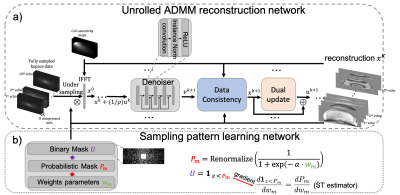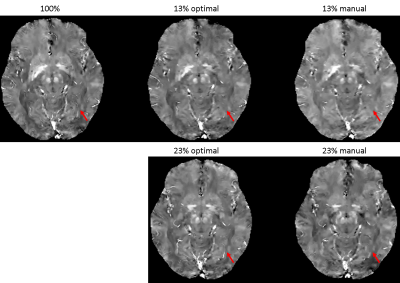Jinwei Zhang1, Hang Zhang1, Pascal Spincemaille2, Mert Sabuncu3, Thanh Nguyen2, Ilhami Kovanlikaya2, and Yi Wang2
1Cornell University, New York, NY, United States, 2Weill Cornell Medical College, New York, NY, United States, 3Cornell University, Ithaca, NY, United States
1Cornell University, New York, NY, United States, 2Weill Cornell Medical College, New York, NY, United States, 3Cornell University, Ithaca, NY, United States
An unrolled ADMM reconstruction network with learned optimal sampling pattern is trained to accelerate multi-echo 3D-GRE acquisition for quantitative susceptibility mapping. Prospective study shows the learned pattern achieves better QSM image quality than a manually designed pattern.

Figure 1. Proposed network architecture. Unrolled ADMM network (a) reconstructed multi-echo images from the under-sampled multi-coil multi-echo kspace data. Sampling pattern learning network (b) optimized the kspace undersampling pattern with a straight-through estimator to improve back-propagation.

Figure 3. QSMs of optimal and manually designed sampling patterns with 13% and 23% sampling ratios, with fully sampled (100%) QSM as the reference. QSM sampled by the optimal pattern captures more details in the image such as veins (red arrow) compared to the manual pattern. With 13% under-sampling ratio, both QSMs by the optimal and manual patterns lose some detailed structures (red arrow).